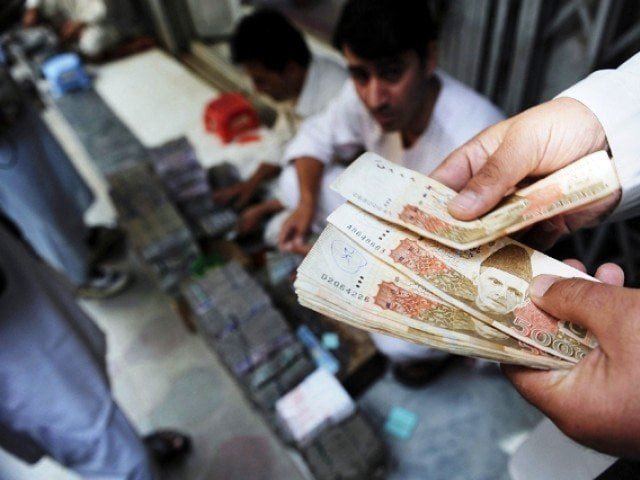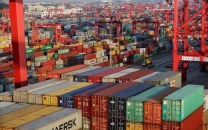Withholding tax regime needs a drastic revamp
Poor consumers suffer as every businessperson adds WHT to his cost

PHOTO: AFP
The tax withheld was originally adjustable against the final tax liability. However, after introduction of the presumptive tax regime in 1991, the WHT paid on commercial imports, supplies by traders and contract receipts became a final tax.
Later on, export realisations, commission and brokerage receipts, profit on deposits, dividend income, prize winnings, etc were also brought into the ambit of final/presumptive tax regime.
'Special’ tax regime likely to be withdrawn for booming construction sector
With the passage of time, the concept of minimum tax was also introduced for certain types of transactions. In this system, the WHT is the minimum tax liability and if after income assessment, the tax liability is worked out to be higher than the WHT, the difference is to be recovered from the taxpayer.
However, if the liability is less than the tax withheld, it is treated as the minimum tax liability of the taxpayer and nothing is refunded.
Unfortunately, the concept of final taxation has converted direct taxation into indirect taxation and every businessperson is adding WHT to his cost due to which poor consumers are suffering. In many cases, the WHT is being treated as consumption tax, which is causing inflation in the country.
The basic purpose of WHT is to restrict tax evasion by documenting the economy. The registered taxpayers act as agents for the Federal Board of Revenue (FBR) by withholding taxes and filing monthly returns without deriving any benefit and at the risk of being non-compliant in case of any default.
Though WHT has become a major source of revenue for the government, unfortunately, withholding agents are facing severe hardships, mainly due to the more than 50 WHT categories with different rates/regimes and then going through the cumbersome process of managing record of the tax deducted/deposited. This increases the cost of doing business for the withholding agents.
The FBR has prescribed certain categories of WHT rates under the Income Tax Ordinance 2001 for various types of payments and it has become extremely difficult, as well as costly, for the person processing payments to be precise and accurate in applying WHT rates and ensure compliance.
The complexity for the withholding agents has further aggravated since the introduction of the Active Taxpayers List and different rates for the filers and non-filers of tax returns.
What needs to be done
The WHT regime should be simplified by reducing the categories of taxes and their rates.
Furthermore, the withholding agent should be facilitated through the robust IRIS – the FBR’s IT system – wherein the tax deduction certificate should be given to the taxpayer instead of relying on the withholding certificates. This is because certain agents do not provide copies of the tax payment challans or deduction certificates to the persons whose tax has been withheld.
The final taxation regime should be done away with and all withholding taxes should be available for adjustment. The FBR’s operations wing should ensure that all persons whose taxes have been deducted file tax returns along with proper trading, profit and loss account and balance sheet. This will help to substantially increase the number of return filers.
There should be maximum five rates of WHT and the differentiation should be on the basis of filer and non-filer only.
Since now WHT consists of more than 70% of direct tax collection, the withholding agents should be given an incentive in the form of tax credit or payment of some percentage of WHT for facilitating the government in identifying the potential tax evaders.
This carrot, in addition to the stick of Sections 161/205 of the Income Tax Ordinance 2001, will encourage the agents to be more compliant.
The WHT challans should be made available on IRIS to every taxpayer, instead of collecting the same from them.
Moreover, when tax collection is shown in the IRIS system, the taxpayers should not be required to produce tax payment challans – whether pertaining to WHT or other payments. This facilitation measure will go a long way in developing the confidence of taxpayers in the FBR.
Ideally, there should be no WHT, except on salary income, but as WHT is almost 70% of direct tax collection, it should be done away with in a phased manner.
As a first step, listed companies can be exempted from the payment of WHT. Since the affairs of these companies are fully documented, there is no fear of compromising documentation and loss of revenue.
WHT should not be used as a revenue measure. Rather, it should only be used as a documentation tool for broadening the tax base. Hence, the WHT rate should not exceed 1% except for dividends, bank profit, prize winnings, brokerage and commission and capital gains earned on stocks.
The tax rate, which is currently 5.5% for the corporate taxpayers and 6% for non-corporate taxpayers, should be reduced to 2% for the manufacturers and 4% for commercial importers in order to boost the industrial base and generate additional employment.
It has been observed that the exemption certificate issued on the import of raw materials by the manufacturers is misused in many cases. It is recommended that the facility of exemption certificate should be done away with.
Govt considering withdrawing banks’ special tax regime
Any reduction in WHT rates for the compliant sector could be offset by increasing the rates for the non-filers, which will induce them to file returns. Last year, the government increased WHT rates for both filers as well as non-filers. This is not a healthy approach.
These suggestions will result in ease of doing business as well as reforms that will support the local manufacturing base, encourage foreign investment, broaden the tax base and increase the documentation of economy. This will also improve direct tax collection.
The writer is former secretary and former senior member Inland Revenue Policy of the FBR
Published in The Express Tribune, June 19th, 2017.
Like Business on Facebook, follow @TribuneBiz on Twitter to stay informed and join in the conversation.


















COMMENTS
Comments are moderated and generally will be posted if they are on-topic and not abusive.
For more information, please see our Comments FAQ